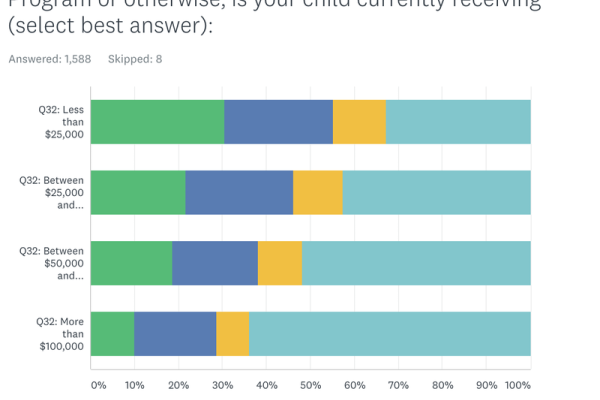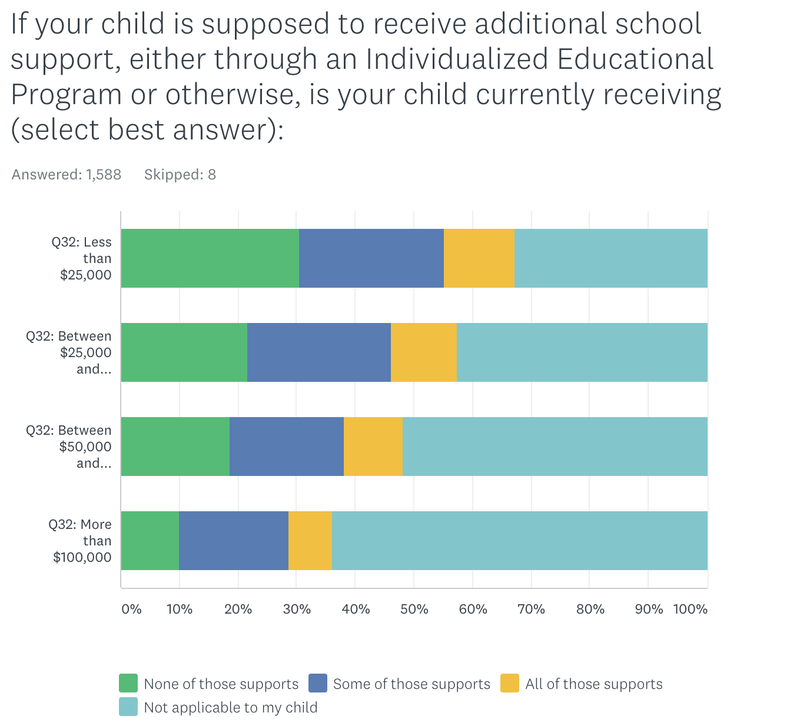
NPR: Remote Learning Gaps for Special Ed
| In the News, Special Education in the News
Survey Shows Big Remote Learning Gaps For Low-Income And Special Needs Children
May 27, 202012:03 PM ET

Four out of 10 of the poorest U.S. students are accessing remote learning as little as once a week or less, according to a new survey from ParentsTogether, an advocacy group. By contrast, for families making more than $100,000 a year, 83% of kids are doing distance learning every day, with the majority engaged over two hours a day, the survey found.
The nation’s schools shut down in-person learning in mid-March, and only a few states, including Colorado, Montana and Wyoming, have experimented with opening classroom doors since then. From the beginning, experts in distance learning warned that it can magnify inequities, with the most able and highly advantaged learners humming along while learners who need more support fall far behind.

Kids from low-income homes are three times more likely not to have consistent access to a device.Courtesy of ParentsTogether via SurveyMonkey
ParentsTogether, in its survey of 1,500 of its members across the country, discovered big gaps — both by income levels and between families with and without children in special education. The online survey wasn’t a scientifically weighted sample, but it was geographically, racially and socioeconomically diverse.
Similar to what other surveys have found, the lowest-income parents, making less than $25,000 a year were 10 times more likely than families making six figures and above to say their kids are doing little or no remote learning (38% vs. 3.7%).
Some other survey items give clues as to why that might be true.
- 32% of the lowest-income families say their students either don’t have a device or have to share it with others such as siblings.
- 11% said their schools didn’t offer any distance learning materials. That compares with only 2% of the highest-income households who said the same.
Perhaps not surprisingly, parents from low-income homes, whose children are mostly attending public schools, give remote learning low marks.
- They are twice as likely to say remote learning is going poorly or very poorly (36% vs. 18%).
- They are much more likely to say their kid’s work is mostly or entirely busywork (35% vs. 19%).

Parents from low-income homes are 10 times more likely to say their kids are doing little or no remote learning.Courtesy of ParentsTogether via SurveyMonkey
And they’re worried about their children’s futures.
- One in 3 is “very concerned” about children falling behind in learning.
- Only 1 in 5 of the wealthiest parents are “very concerned” and 60% aren’t concerned at all.

Parents from low-income homes are twice as likely to say remote learning is going poorly or very poorly.Courtesy of ParentsTogether via SurveyMonkey
The survey also found big gaps reported by families whose children are in special education.
- Four in 10 say they are not receiving any support at all.
- Just 1 in 5 report that they are receiving all the services their children are entitled to.
- 35% report that their children are doing little to no remote learning, compared with 17% of their general education peers.
- And, 40% of parents of special needs children are concerned about their children’s mental health, compared with 23% of parents of other children.

39% of parents of kids with IEPs say they are not receiving any support at all.Courtesy of ParentsTogether via SurveyMonkey





Leave a Reply